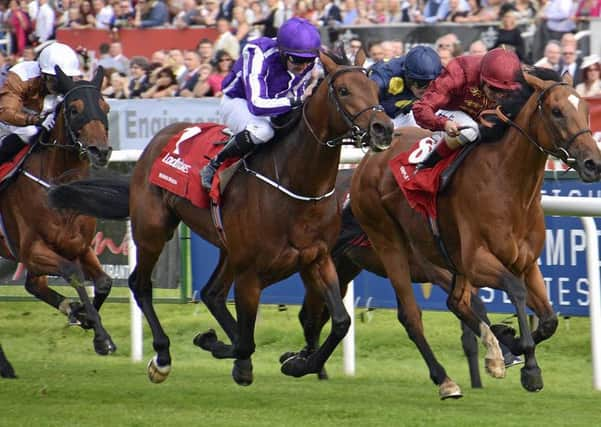My View, Peter Davies: Long may racing be part of our cultural life


The town’s glorious classic racing history remains unrivalled, beginning in 1776 after the legendary meeting of Lord Rockingham and Colonel Anthony St Leger at the Red Lion.
But horse racing, on or around the Town Moor, dates from at least 1595 after which it made rather chequered progress with the corporation adopting a puritanical stance in 1615 and passing a resolution to pull down the stand and discontinue the races.
Advertisement
Hide AdAdvertisement
Hide AdThis draconian decision followed a number of quarrels, fights, murders and lawsuits at the previous meeting. Fortunately no-one bothered to implement the decision, for in 1616 the corporation spent 12 pence on ‘making a way for the horse race at the water gap’.
Travel problems for the next 200 years ensured that few horses took part. Often there were only two runners or sometimes just one, resulting in a walkover.
Crowds, particularly members of the aristocracy, busied themselves with cock-fighting and fox-hunting in the morning and lavish entertainment in the evening, including theatre, dancing and gambling.
In 1766, 10 years before the St Leger was instituted, the Doncaster Gold Cup made its debut. The Cup, value £80, was for a race over four miles and heats took place before the final. It was for horses aged five and over and was the most important race in the country for many years.
Advertisement
Hide AdAdvertisement
Hide AdThe 1766 race, run on Cantley Common, was won by Lord Hamilton’s chestnut mare Charlotte.
Ascot eventually caught up with Doncaster when Queen Charlotte launched its own gold cup in 1807.
Doncaster was truly the trendsetter in horse racing.
For many years the cup took precedence over the infant St Leger and it was 30 years before the classic became the more popular of the two races, which from 1777 were both run on the new Town Moor course that we know today.
The Doncaster Cup was the first important horse race to be run in this country and eventually became the model for Ascot, Goodwood and York, which all introduced similar races.
Advertisement
Hide AdAdvertisement
Hide AdIn recent years the greatest horse to win the Doncaster Cup was the incomparable Double Trigger who won three times in the 1990s.
He was also the last horse to land the stayers’ Triple Crown (Doncaster, Ascot and Goodwood Cups) and a lifesize bronze statue stands in his honour in Town Moor’s main enclosure.
This is a week of great pride for Doncaster and its racecourse, which is held to be “the finest and fairest in the country”.
Long may racing play a central role in Doncaster’s cultural and sporting life.